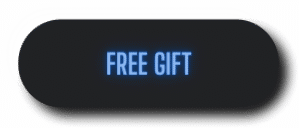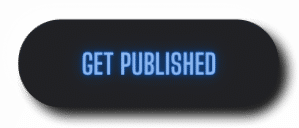As I walk toward my computer, morning coffee in hand, high pitched pings greet and alert me to the fact that someone had sent an email. Perhaps it is another invitation to be a guest on a radio show to discuss dreams, I thought. No. The email is a cry for dream-help.

It reads, “My dreams are so real I often do not know if I am really dreaming or in another dimension. How can I tell?” “Pinch yourself to see if you are dreaming,” might be something you have heard someone say to you. Another old cliché often used is, “pinch me, I must be dreaming.” There is a good reason for this call to action.
This is the story of dreams that are more real than reality. Have you ever had such a dream? Pain is the answer.
Some studies indicate that dream pain is rare and may be beyond the representational capability of dreaming. In other words, pain is just too complicated in a dream to really work.
This excerpt is an example taken from The Neurocritic Blogspot.
Once I dreamed I was lying on my stomach, getting a tattoo on my calf against my will. Because it was a particularly malevolent tattoo studio, I cried out in the dream. When I woke up, I felt no pain at all.
The pain in the dream woke the dreamer, but in the waking world, the pain was nonexistent.
While you are in the dream state, your dreams can be as vivid as reality. One type of reality dream we can have is known as the Waking Dream. We believe we have awakened, are preparing for work or school as we do daily, but when the bus doors open the driver is Winney the Poo. Ding-ding! We pinch ourselves to be sure this time we really are awake and not still dreaming.
Another type of Waking Dream is when you dream that you woke up and begin your day as you normally do and then suddenly you really do wake up…and you sit up, pinch yourself or touch your face to see if you are really awake this time.
Pinching is reassuring because pain is the reality.
When pain wakes us up from a dream, it can be to remind us that we were dreaming, but are now awake. Although we may dream of pain, we may not actually feel the pain. For example, we may dream that our hand is on fire. We may watch the blazes engulf our fingers, yet feel no burning sensation or pain in the dream. We may even comment to ourselves in the dream that the fire is quite beautiful. However, if reality begins to creep into our dream our hand may begin to feel hot or uncomfortable, and this will usually wake us from the dream.
Reality has validation in discomfort.
In most cases, reality can be validated in the waking world using real-life consequences. Dropping a raw egg on a hard kitchen floor usually results in an expected consequence. Just the thought may make you cringe.
However, in a dream, the floor might suddenly open up and swallow the egg, or the egg could bounce and stick to the ceiling, grow wings and fly away like a bat, all of which would not cause the dreamer even to bat an eye.
It is this, Alice in Wonderland Mad Hatter’s Tea Party that makes dreams so amusing.
However, you can also have a Precognitive Dream which predicts the future through a sixth sense. This dream may later be validated in reality and by reality. An example of such a dream is a medical report confirming a diagnostic dream that turns out to be an early warning sign of a disease.
Your vivid Lucid Dream validated during your waking life is part of your reality.
Examples of this type of validated dreaming grounded in reality appear in the book Dreams That Can Save Your Life: Early Warning Signs of Cancer and Other Diseases. The dream research is based on the diagnostic and precognitive dreams from a Breast Cancer Dream Group involving eighteen women whose dreams diagnosed their breast cancer that was later validated by pathology reports. Dr. Larry Burk, Radiologist at Duke University Medical, headed the research, which has been published distributed in medical journals and by Inner Traditions/Simon and Schuster. The bizarre precognitive and diagnostic recurrent breast cancer dreams were grounded by the reality of pathology reports in the waking world of medicine.
Reality is grounded.
An example of grounded reality would be the inability to effortlessly fly through the air with our bodies when we are awake. This explains how waking reality has validation.
Flying may represent a sense of freedom from reality.
According to Psychology Today, a flying dream can serve as a sort of escape from the pressures of our waking world which is represented by the ground. This is also an example of the play-on-words often represented in dreams. In reality, a plane is grounded when weather conditions do not permit flight. In a dream, we may be grounded when life becomes too burdensome to allow us freedom or lightness of being capable of flight.
Much like the fight or flight response of a bird, we may take flight from a disturbing situation in our dream. Feeling as free and flighty as a bird does not mean we can do so when awake.
Reality is relative to the environment in which it is experienced.
And that brings us back to the first statement in this article, a dream to the dreamer may feel as real during that reality as our waking life feels to us during our daily reality.I hope these explanations help to answer your cry for Dream-help concerning dreams vs. reality and how you can learn how to know the difference.
About the Author: Kathleen (Kat) O’Keefe-Kanavos, author and three-time cancer survivor whose guided dreams diagnosed her illness as seen on Dr. Oz, The Doctors, NBC News, American Express Open, in Newspapers and magazines. She’s a Contributing author to Chicken Soup for the Soul, TV/Radio Host/Producer- Wicked Housewives On Cape Cod™, the Kat Kanavos Show, Internationally Syndicated Columnist in BIZ360, Keynote Speaker and Lecturer who promotes patient advocacy and Spiritual guidance. www.KathleenOkeefeKanavos.com
Photo Credit: Pixabay Dream CastlePixabay httpspixabay.com endreamcastle europe and america 1518227 No Attribution Required
Article Research:
Pain in dreams-PubMed-NCBI, Sleep. 1993 Aug;16(5):490-8 Nielsen TA1, McGregor DL, Zadra A, Ilnicki D, Ouellet L. https://www.ncbi.nlm.nih.gov/pubmed/7690981
waking dream – Wiktionary https://en.wiktionary.org/wiki/waking_dream
Dreams Vs Reality: How Do You Know Which Is Which .., https://www.bizcatalyst360.com/dreams-vs-reality-how-do-you-know-which-is-which/
http://neurocritic.blogspot.com/
https://www.world-of-lucid-dreaming.com/precognitive-dreams.html







